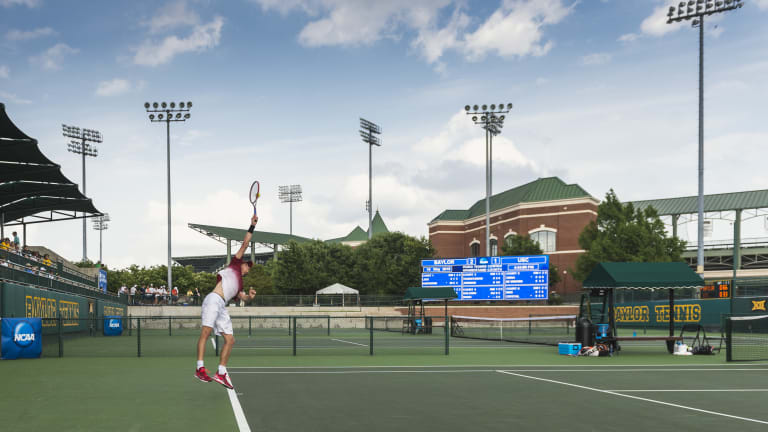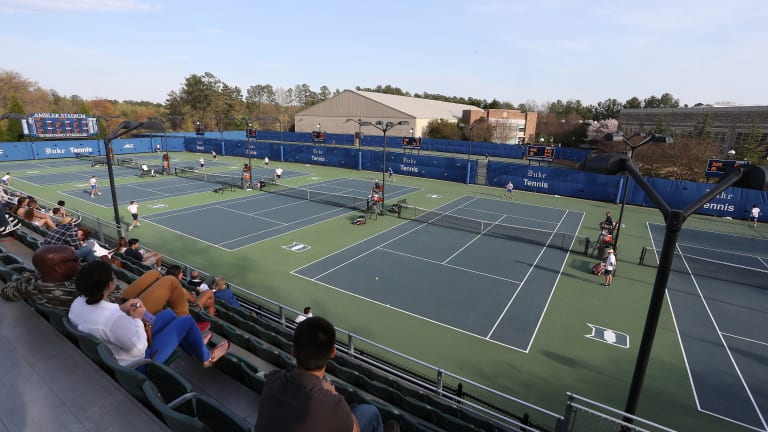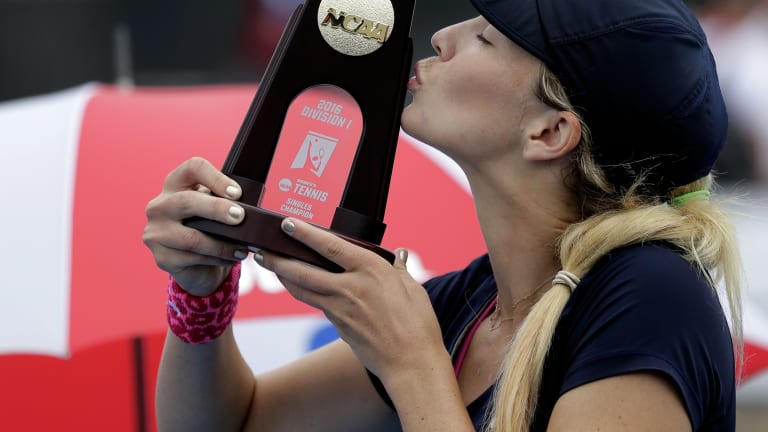All eyes were on us,” Luca Corinteli remembers. It was the spring of 2016, and the University of Virginia junior was playing in the final of the Division I NCAA Championships in Tulsa, OK. Two of the three doubles matches between Virginia and its opponent, the University of Oklahoma, had finished; each team had won one. Now the packed house at the Case Tennis Center turned its attention to Corinteli and his partner, Ryan Shane. It was up to them to bring home an all-important doubles point for the Cavaliers.
“We knew it could be the deciding factor in who won the title,” Corinteli says, “and there was an insane amount of energy across all the courts.”
Making the moment a little more insane was the score: it was 5–5 and deuce. In this case, deuce wasn’t a haven; it was a tightrope that both teams were trying to walk. In 2016, Division I began using no-ad scoring as part of a series of changes designed to speed up the college game. Those changes also included reducing doubles matches to a six-game set.
All of which meant that, as Corinteli began his service motion, he knew he needed to come up with something special.
“I hit an unreturned serve and felt an immediate swing in momentum,” Corinteli says, “and we ended up breaking in the next game to win. That had a huge impact on the rest of the match.”
Virginia would beat Oklahoma, 4–1, for its third Division I tennis title in four years.
“Points like that make no-ad so great for college tennis,” Corinteli says with a smile.
Danielle Collins, two-time NCAA champion at Virginia, beats Venus Williams at this year's Miami Open:


